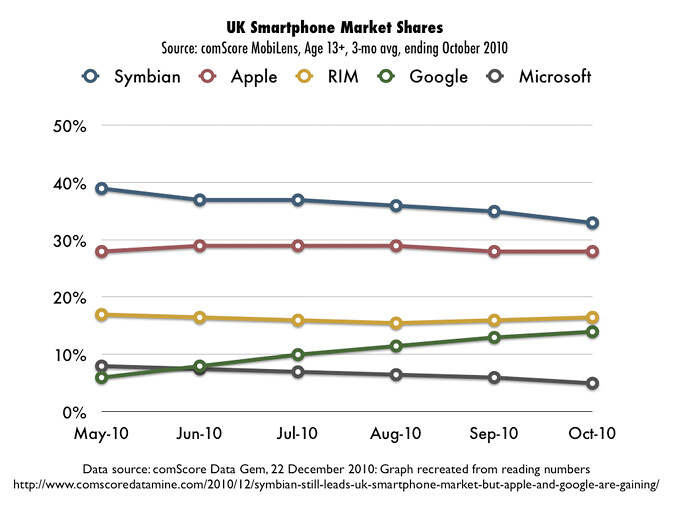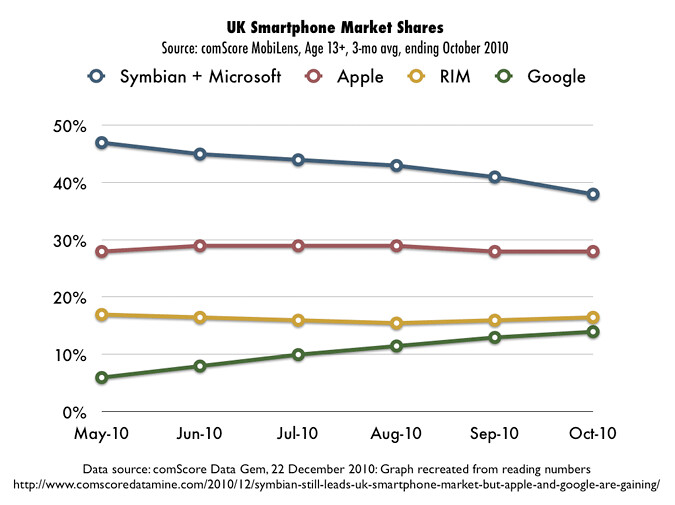Regular readers of this blog will know that the primary focus of
The Scientific Marketer is customer analysis as it pertains to marketing.
But one of the major themes from that analysis is that marketing surprisingly
frequently causes negative effects—sometimes, so negative that it
results in the loss of a customer.
This reminds us that, valuable though the role of analysis can be,
it is ultimately actions that count.
Customer service is hard to get right, but the sheer hamfistedness
of much that passes for customer service is breathtaking;
this story simply recounts my experience with one company that called
me this morning, and an attempt to analyse it from the perspective
of customer experience.
The Call
This morning, my work was interrupted by a call from a company I placed
an order with on 25th January last year (2010).
I’ll call the company NorthSouth.
A pleasant woman said she was calling because my company, Stochastic Solutions,
has an account with NorthSouth and they noticed that I hadn’t used it recently;
she wanted to know if there was a reason.
I recognized the company name and knew I had placed exactly one order with
NorthSouth. I wasn’t sure what the order had been for, but did remember
that I had paid a reasonable amount for next-day delivery, because
(funnily enough) I needed it the next day.
I also remembered that they had failed to deliver on time.
After the call, I looked it up, and the item was a Mac/PC-compatible
2GB 256-bit AES encrypted flash drive made by Kingston
(the Data Traveler Vault Privacy Edition).
Looking at my diary, it becomes clear that the reason I needed it was that
on 27th January I went to a client site, and the security policy I was
working under required any drive I used to be encrypted.
I now recall that the lack of a suitable encrypted drive was, as expected,
a major problem, and caused a lot of time to be lost.
In the event, I called up to cancel the order, since the immediate
need had passed, but NorthSouth refused and merely
agreed to refund the next-day delivery charge.
In a further amusing twist, I happened to be preparing paperwork for
my accountant the other day and noticed that NorthSouth had actually
taken over six months to refund the next-day shipping charge.
Speaking to the person who called this morning, however, I didn’t remember
all that. My only recollections were (1) I ordered something I needed
with next-day delivery (2) they had failed to deliver on time (3) this
had caused me a problem. So my response to “is there a reason?” was along
the lines of “Yes. I ordered something from you with next day shipping
and you failed to deliver it on time.”
The woman I was talking to sounded surprised, and slightly off balance,
but came back with “Won’t you give us a chance to prove we can do better
than that?” I declined and she said she’d make some notes on the account
so that I don’t keep getting calls.
Analysis
The point of this story isn’t to excoriate NorthSouth for their appalling
customer service; I have only one data point, and I certainly don’t want
to read too much into a single incident. But I think it’s still possible
to learn a number of things from this one incident.
My candidate list would be these:
- Restoration.
Mostly, when people (especially businesses) pay for next-day delivery
(in this case, increasing the effective price of the item by a third)
they don’t do so for the hell of it: they do it either because they
need it or because they are impatient.
Simply refunding the next-day charge, while clearly the minimum
that the supplier can get away with when it fails to supply on time,
is unlikely to leave the customer satisfied.
- The Primacy and the Recency Effect.
It is a well known principle of presentations that the most important
two parts are the start of the presentation,
when you either succeed or fail in hooking your audience
(the primacy effect), and the
end of the presentation, when you have the opportunity to offer
a take-away as their last impression
(the recency effect).
I tend to argue that customers have long memories, particularly
for unexpectedly poor service, but also for unexpectedly good service.
But I think the primacy and recency effect are relevant in customer
experience too. In this case, my first impression was caused by the
failure to deliver on time. My most recent impression (before the call)
was that they took a remarkably long time even to provide the inadequate
remedy that they offered.
In this case, there was probably no reasonable way of winning me back as
a customer after screwing up the first order and then handling the
aftermath poorly.
- If you’re going to operate a win-back/reactivation programme,
at least look up the customer first.
To its credit, NorthSouth clearly has a customer win-back programme,
perhaps triggered a year after an order.
The woman who called clearly knew at least a tiny-bit about me in the
sense that she knew I’d ordered on the internet. This suggests that
either she looked up my customer record or (perhaps more likely) was
given a list that included at least some information about the order
history. But what is equally clear is that she didn’t have all
the information that the company has (or should have).
Almost certainly, the company has some kind of record of the fact
that it screwed up, even if it’s only the credit to the account that
was made when they (eventually) refunded the next-day shipping charge.
The woman who called could have been much better forearmed
or could have saved herself the effort of making the call.
What Could Have Happened?
As I say, it’s not clear that, in this case, there’s anything economically
worthwhile that the company could have done to win back my business; I think
you have to accept that once you’ve screwed up the first order, you’ve
probably lost the customer unless you are in some kind of monopoly situation
or have such compelling differentiation that the customer might plausibly
come back anyway.
(The bucket airlines tend to benefit from at least one,
and sometimes both of these effects.)
But I will offer a couple of possibilities:
Overcompensate.
There are lots of reasons for (from the vendors perspective)
over-compensating customers when you screw up.
I would include in these
- it emphasizes to the customer that you take the problem seriously;
- it shows that your claim to ‘care’ extends to being willing to make
a financial sacrifice;
- perhaps most importantly, it creates a clear economic incentive within
the company not to screw up;
- you potentially exceed ths customer’s expectation, thus replacing
a negative perception with a more recent positive one.
In fact, there’s quite a lot of anecdotal evidence that an
exceptionally good response to a mistake can lead to a better
customer perception than getting it right in the first place.
Whole Customer View.
It’s not exactly a radical new insight, but the more connected is your
view of the customer, the easier it is to interact appropriately.
In this case, if the woman who called had known that NorthSouth
failed to deliver on time, she would certainly have been in a better
position to discuss reactivation.
First purchase.
As noted above, the first interaction is particularly important,
and if you screw it up, I guess you’ll rarely be given a second chance.
If you want to try to undo the damage of a broken first interaction,
you’re going to have to work particularly hard and give the customer
some plausible reasons to believe that the situation was atypical.

